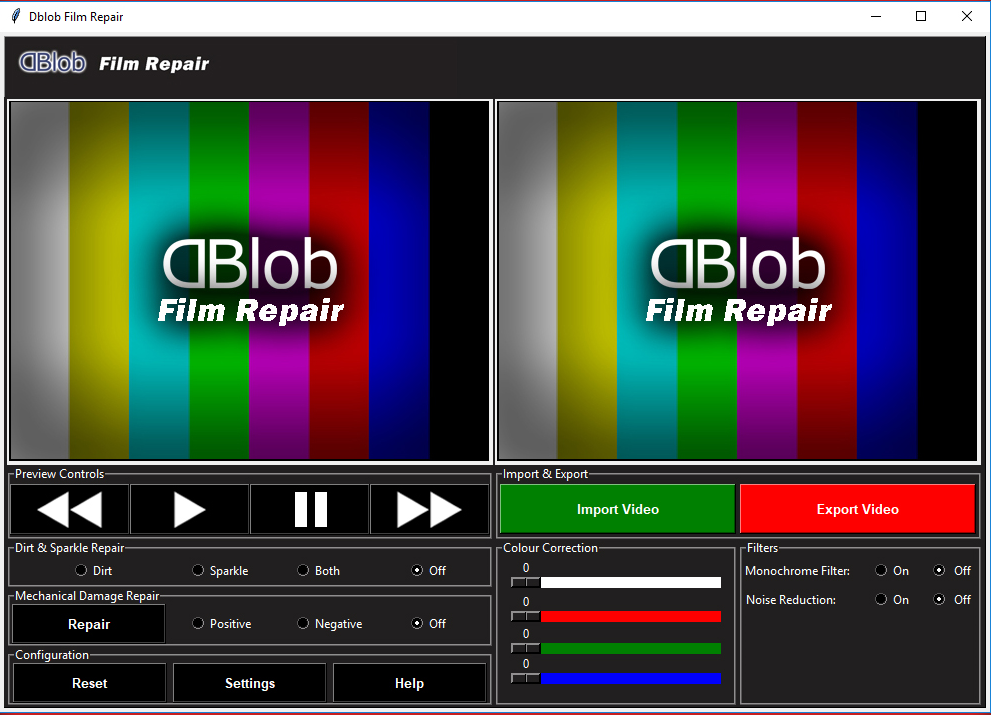I just thought I would make a quick blog entry to let you all know where I have been for the last six months, which was a self imposed hermitage of study, until I finished all that was required in the last semester of the final year of my Computer Science degree.
That is all done now and I am just waiting for my grades to arrive with fingers crossed that there will be not resits or CA to repeat. So, as I have a bit of free time on my hands, I thought I would tell you about my final year project which is definitely a subject of interest for this blog.
My project is a desktop application for repairing old cine film, which I have written in Python, therefore it can be used on any system that supports that particular programming language. The idea came from the time when I used to work in video edit suites and part of what we did involved cleaning up artefacts on cinematic film that had been transferred to video tape, as cinematic film was still widely used in TV and Film (obviously) at that time.
This was not a popular task, as it was repetitive, dull and unpopular with clients, as the end result maintained a level of technical excellence as opposed to providing a flourish of visual excitement, so if an automated way of cleaning up these problematic artefacts was available at that time, I think it would have been gladly adopted.
Of course time has moved on with videotape becoming a thing of the past and cine film being retired to the back lot in favour of HD Video formats of various kinds, but there is still a place I feel for an application that can help to clean up old cinematic film that has been retained in libraries around the world and archived for historical purposes.
So, without further fanfare, let me introduce my project “DBlob Film Repair” a film cleaning application!!!
The name of the application comes from a slang term used in the British TV industry for the process of getting rid of film dirt and sparkle called “dblobbing” and dblobbing is exactly what this application does. It also helps to fix film scratches and perform primary additive RGB Colour Correction with a limited degree of filtering to help with the overall film cleanup process.

I plan to develop this application further by refining existing features and creating further additions that will incorporate elements of machine learning. Once I begin this work, I will be adding a further more detailed description of this project.
